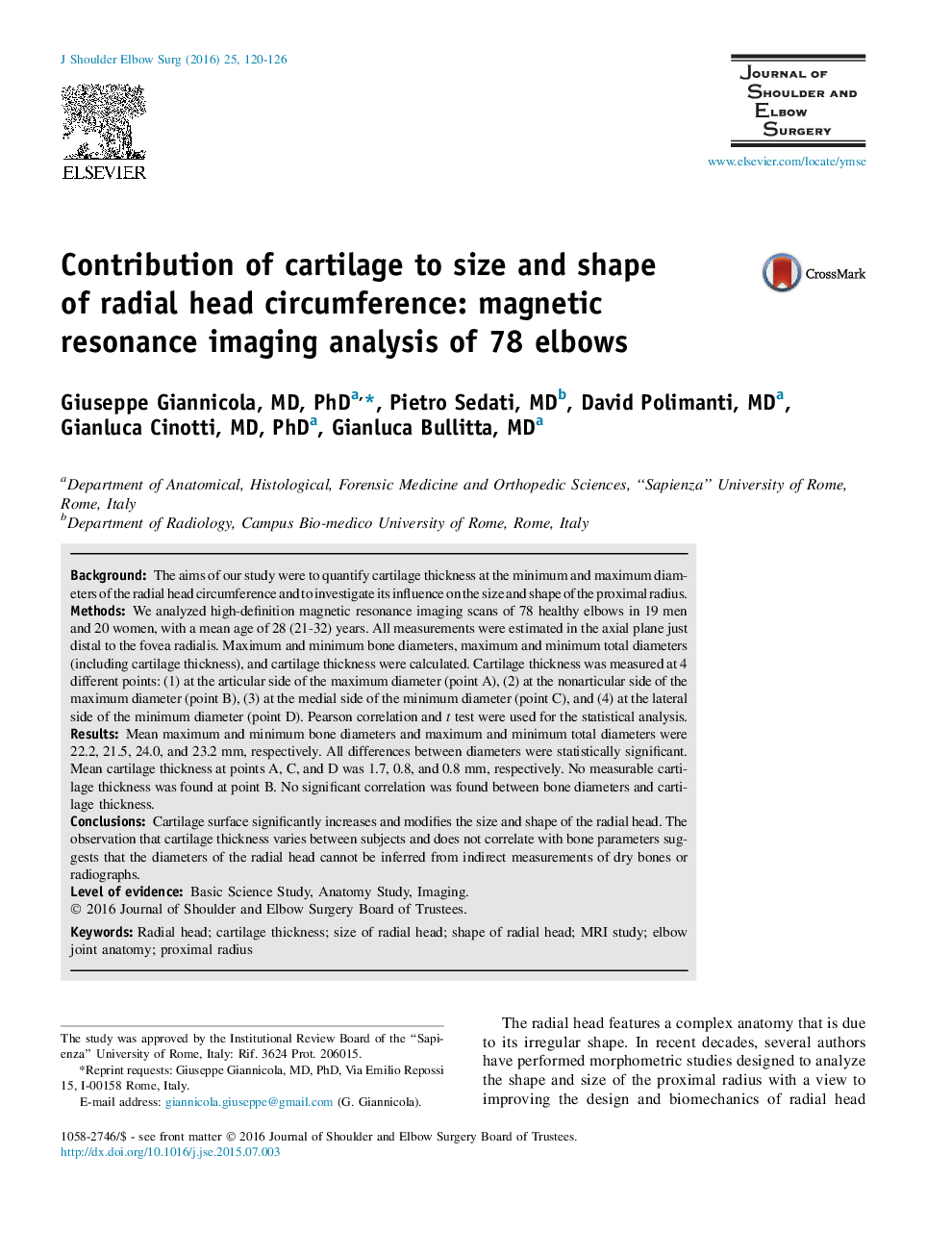| Article ID | Journal | Published Year | Pages | File Type |
|---|---|---|---|---|
| 6210856 | Journal of Shoulder and Elbow Surgery | 2016 | 7 Pages |
BackgroundThe aims of our study were to quantify cartilage thickness at the minimum and maximum diameters of the radial head circumference and to investigate its influence on the size and shape of the proximal radius.MethodsWe analyzed high-definition magnetic resonance imaging scans of 78 healthy elbows in 19 men and 20 women, with a mean age of 28 (21-32) years. All measurements were estimated in the axial plane just distal to the fovea radialis. Maximum and minimum bone diameters, maximum and minimum total diameters (including cartilage thickness), and cartilage thickness were calculated. Cartilage thickness was measured at 4 different points: (1) at the articular side of the maximum diameter (point A), (2) at the nonarticular side of the maximum diameter (point B), (3) at the medial side of the minimum diameter (point C), and (4) at the lateral side of the minimum diameter (point D). Pearson correlation and t test were used for the statistical analysis.ResultsMean maximum and minimum bone diameters and maximum and minimum total diameters were 22.2, 21.5, 24.0, and 23.2Â mm, respectively. All differences between diameters were statistically significant. Mean cartilage thickness at points A, C, and D was 1.7, 0.8, and 0.8Â mm, respectively. No measurable cartilage thickness was found at point B. No significant correlation was found between bone diameters and cartilage thickness.ConclusionsCartilage surface significantly increases and modifies the size and shape of the radial head. The observation that cartilage thickness varies between subjects and does not correlate with bone parameters suggests that the diameters of the radial head cannot be inferred from indirect measurements of dry bones or radiographs.
